What’s better for amputee pets? Let’s take a look at partial versus full leg amputation for dogs and cats. We also discuss how pets with more stump are better candidates for pet prosthetics.
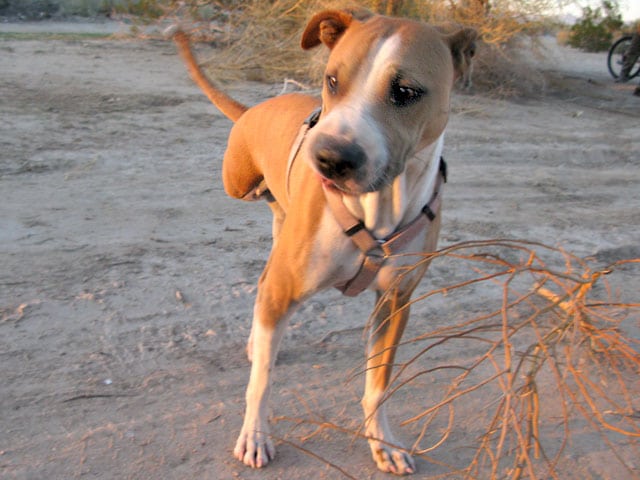
A Review of Partial Versus Full Leg Amputation for Pets
Why is it that some Tripawd dogs and cats have a stump when other don’t? Is it better to leave part of the leg or take all of it? Should the leg and scapula go, or just the leg?
After talking to vets and pet prosthetics makers and experts through the years we’ve learned the answer to that question. The choice of full or partial leg amputation for dogs and cats really depends on the vet’s preference, and the animal’s condition.
Not too long ago veterinarians were taught that taking all of the limb was the best idea.
The belief was that a partial limb would cause balance and gait problems if the animal tried to use the stump. But now that’s not such an automatic decision.
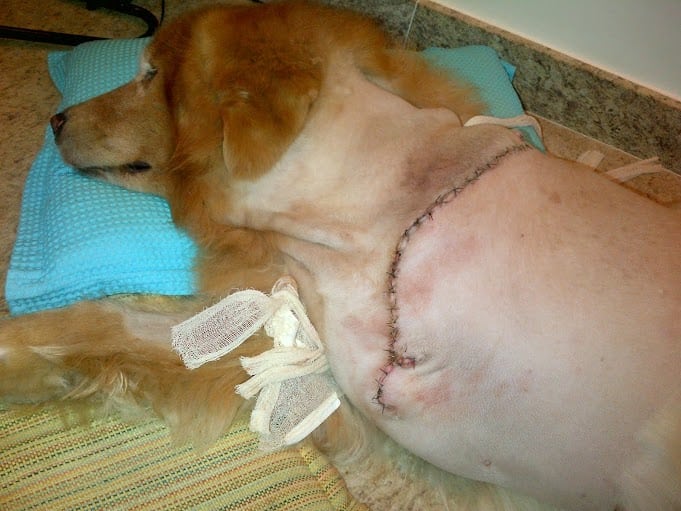
How Limb Cancer Diagnosis Affects the Vet’s Decision
A full limb amputation surgery on a dog or cat is more complicated, time consuming and risky than a partial limb amputation. But if a pet has cancer in the leg, a full amputation is often required in order to get wide margins around the tumor.
There are exceptions for pets with cancer in the leg. Sometimes surgeons can leave almost all of the affected leg by performing limb sparing surgery. This procedure removes the tumorous area and replaces it with healthy bone from a donor and bone graft from other parts of the patient’s body (see OncoLink for more details).
Still, not every animal is a good candidate for limb sparing and the high cost of the procedure rules it out for many.
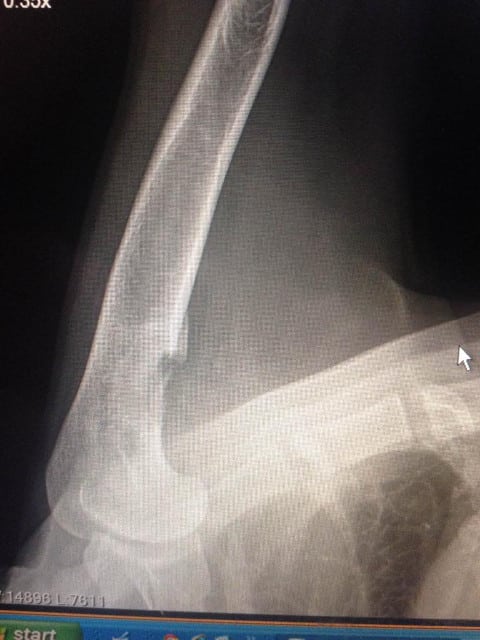
What About Dogs and Cats without Cancer?
Animals like Cleo the Malamute who don’t have cancer but need a damaged leg removed have more options. As we said, vets used to remove all of the affected limb no matter what the circumstances, but once again that thinking is evolving. New orthopedic studies along with advances in pet prosthetics are encouraging veterinarians to give pet parents the option to leave as much of the limb as possible, especially if they think that a prosthetic is in their future.
The question of whether or not to do a partial or full leg amputation on your dog or cat depends on if you want to try prosthetic limb. And it needs to be addressed before amputation surgery.
Prosthetic limbs need a significant bony area to grab onto. If a Tripawd doesn’t have the right amount of limb left over after amputation, a prosthetic is never an option.
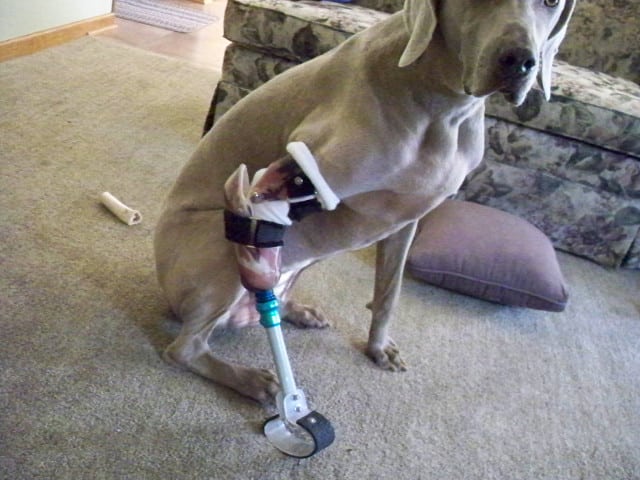
Some day prosthetic limb implants for pets (referred to as “Osseointegration“) will be more common.
Until then, today’s prosthetic legs require training and a chunk of money. But as our discussion with OrthoPets revealed, prostheses can significantly improve quality of life for three-legged animals.
Even if a prosthetic isn’t in your pet’s future, a partial leg amputation can still be beneficial.
Today’s vets are starting to think that a partial limb can actually help with balance and mobility. That extra limb can give the Tripawd an extra boost in certain situations, like when getting off the floor, leaning on objects for balance, etc. We aren’t vets, but that idea is still debatable to us, based on what we’ve seen among our membership.
If a partial limb amputation doesn’t have adequate skin left at the incision area, complications can occur. As these Tripawd parents discovered, it can be tough to heal the thin-skinned incision area around a stump.
Several of our members with partial leg amputations have experienced poor wound healing. A second “amputation surgery correction” is sometimes required to remove the rest of the limb.
“They Call it An Amputation Correction”
Our second tripawd, Biff, came to us with a small stump remaining of his left front leg. He has been with us now for almost two years, and the stump has become more of a problem. It has atrophied, and it pulls on his spine and puts extra pressure on his remaining legs. The muscles in his shoulder make him think he has a full leg, and that causes confusion in his gait. As you may or may not know, dogs put 60% of their weight on their front legs. Therefore, a stump in the back is not as much of a problem as a stump in the front.
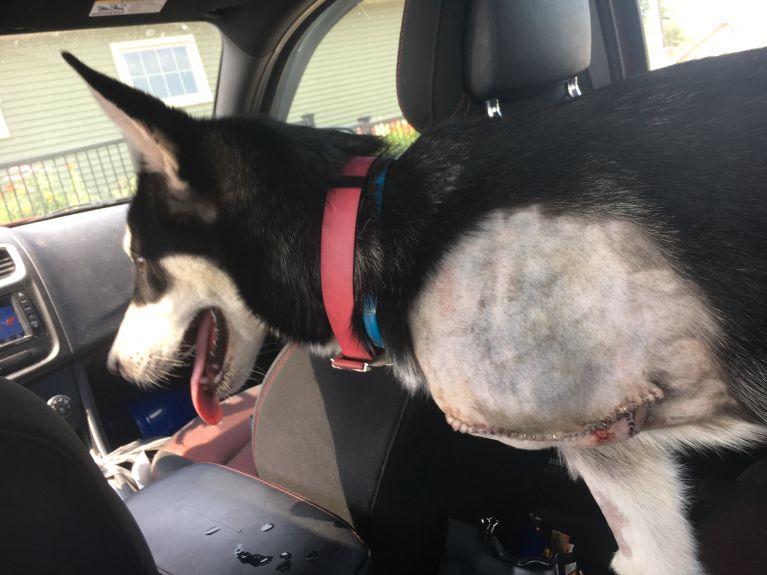
“She should have had the scapula removal in the first place.”
Vet Y said the bone was actually pushing through the incision, which is why the staples had popped. They had to completely open her back up, shave down the bone, and stitch her back up again. . . Over the next week the top puncture healed nicely, it stopped oozing and all was looking good. But just one fall, and the incision was opening again. Just a little and not bleeding but it was there.
Still, Tripawd parents like Megan said in this “Non-Scapular vs. Scapular” discussion that their dog’s partial limb amputation incision healed nicely:
We never had any issues with Sam’s stump–he was able to navigate in the house, up and down stairs, around corners, in the woods and underbrush, etc. fine. And he never had any problems lying down on it (started doing it after only a couple days, in fact…I had to put towels down so it wouldn’t make a mess :D).
If you’re not sure whether or not to leave all or part of your dog or cat’s limb, be sure to get a second opinion from a board-certified orthopedic surgeon who works with prostheses designers on a regular basis. These experts are best equipped to give you an honest evaluation of the pros and cons for each type of amputation surgery based on your animal’s unique situation.
Recommended Reading
All Tripawds Posts About Prosthetics
Tripawds Interviews with OrthoPets
Tripawds Interviews with Colorado State Veterinary Orthopedics Expert Dr. Duerr
 Join the forum discussion on this topic!
Join the forum discussion on this topic!
My cats foot needs to come off but vet suggested whole leg
Bottom of his foot is bad, but want to know why he just can’t have foot amputated, not the whole leg?
It may be time to get another opinion from a board certified orthopedic surgeon experienced with prosthetics. Oftentimes it is an easier less dangerous procedure to remove the whole limb, but every vet is different. Cat’s are also not the best at adapting to prosthetic use, and ongoing injury can occur due to residual limb use. If at all possible, consider visiting a veterinary teaching hospital or AAHA clinic.
I’m looking for anyone who has dealt with a front leg amputation (osteosarcoma) in an almost 11yr Golden? I want to know if they struggle to get used to and/or get depressed. I also have a 14 month old and they play quite a bit – will he be able to tolerate/engage? I’m going the path of amputation/chemo. Any advice/guidance would be greatly appreciated. Surgical consult next Friday.
Thank you
Jenn
Best wishes for your pup! You’ll find plenty of stories and much more support from others in the discussion forums. Or feel free to call the toll-free Tripawds Helpline anytime! For help finding all resources and assistance programs, start here.
My Isabella was born with a partial leg that even has one little pad on the bottom. So far, so good, and she does use it for helping her dig, for gathering something, and she moves it in a circular motion when she wants me to get up and attend to her. It may affect her gait, but we’re keeping it until either it causes problems or we see about a prosthetic at about 2 years old, when she’ll be fully grown. She’s 60+ pounds and it is a front leg.
Almost 11 months now, and one of the most active dogs I’ve had. Very strong willed, an escape artist and loves to jump up on people, we are a work in progress. I had thought to train her for therapy work–looks like Search and Rescue may be more up her alley! :O) We’ll see. She’s my love, that’s for sure.
Glad this website is here. Thanks for your work.
Thanks for the comment and best wishes with Isabella! Don’t miss our articles and videos about prosthetics for tripawds.